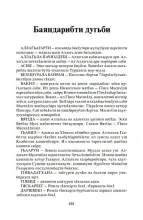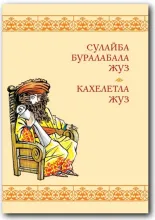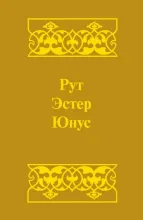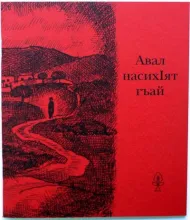Dargi
autumn-2024-newsletter-on-the-dargi-project

The Dargi Bible translation team is based in Dagestan. One of the team members, who translated Song of Songs and edited several other Dargi Scripture portions, recently dropped by the IBT office during a visit to Moscow.
news-06042023
The Institute for Bible Translation (IBT) has published the Dargi edition of the Injil, containing six New Testament books: the Gospels of Matthew, Mark, Luke, and John, the Acts of the Apostles, and the book of Revelation. The title of this edition, Injil, is mentioned several times in the Qur'an and is familiar to readers from the Muslim tradition. This word is the Arabic equivalent of the Greek word "Evangelion" and means “Good News”.
The Dargis are the second largest ethnic group in the Republic of Dagestan, constituting about 16.5% of the republic's population. The Dargi language (with 485,705 speakers in Russia) belongs to the Nakh-Dagestanian family of North Caucasian languages. Dargis traditionally adhere to Sunni Islam...
news-04102022
The Institute for Bible Translation (IBT) has released a new publication in Dargi, one of the official languages of the Republic of Dagestan in the Russian Federation. Newspapers, journals, and books are published in this language, and it is studied in school in areas with a large Dargi population. There are altogether about 485,000 speakers of Dargi in Russia.
news-09092020
According to the 2010 census of Russia, there are 485,705 speakers of Dargi. There are a number of Dargi dialects, with the literary dialect being taught in most schools in traditionally Dargi regions. Books, newspapers, magazines, and a regional theater all use this literary dialect, so it was chosen as the language of the Bible translation project.
Previously, IBT published the Gospel of Mark (2002, 2007), the Gospel of Luke (2010), the Gospel of Matthew (2013), and a collection of Gospel Parables (2017) in Dargi. For the translation of Ruth, Esther, and Jonah, a new translator joined the project.
newsletter-011218
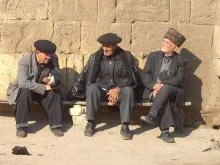
news-140217
IBT has published an illustrated edition of “Parables from the Gospel of Luke” in the Dargi language.
The Dargi people live primarily in the Republic of Dagestan (Caucasus region of southern Russia). With a population of about 590,000, they comprise about 16% of the total population of Dagestan and are the second largest ethnic group there. Most live in the mountainous and foothill areas of central Dagestan.


